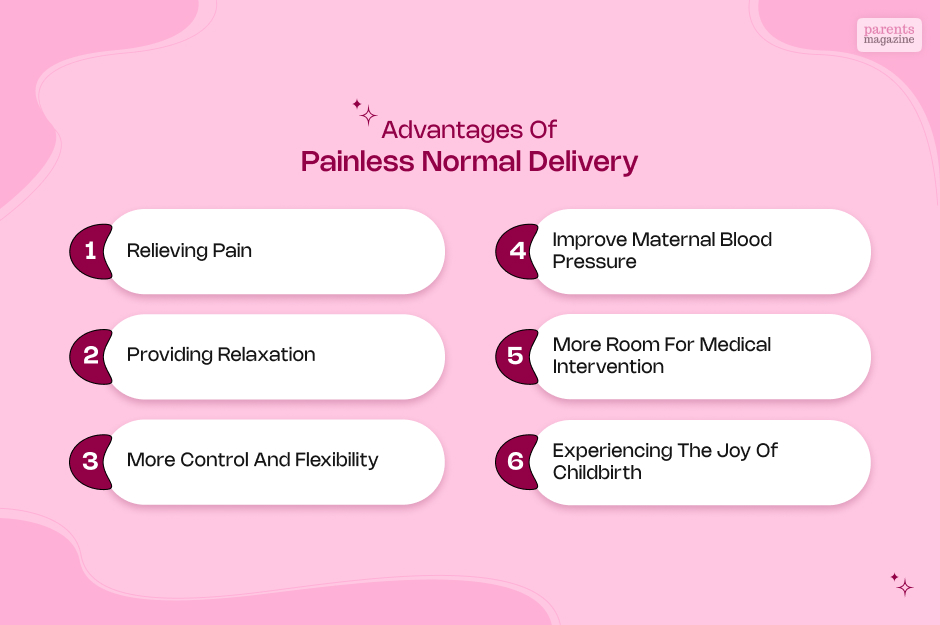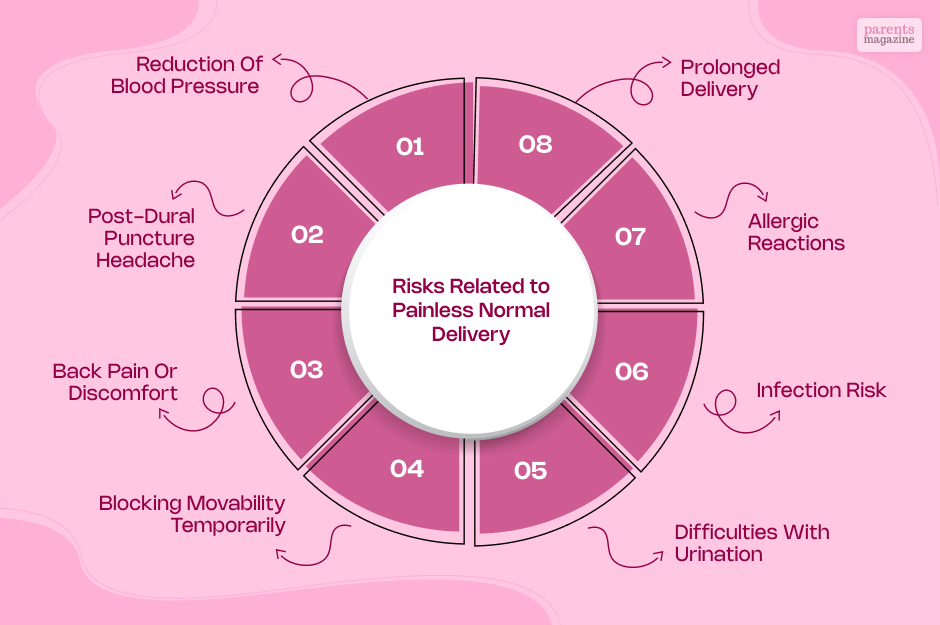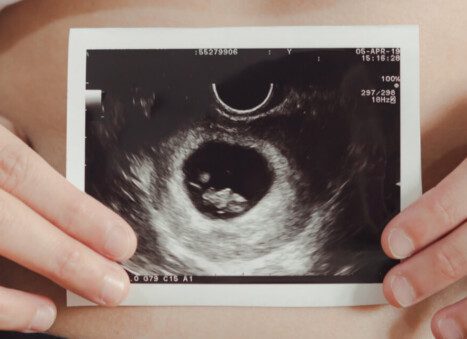
Achieving a Painless Normal Delivery: Risks & Benefits for Mothers-to-Be
The wonderful journey of becoming a mother starts with pain.
Childbirth is an excruciating process that takes both emotional and physical toll on you. However, there’s something called painless normal delivery, making it easier for mothers to have a normal childbirth.
It’s a procedure that keeps a would-be-mom awake throughout the process, giving her the experience of childbirth without losing a moment. Normal, painless delivery or epidural analgesia is an anesthetic process helping with normal delivery.
However, should you opt for this procedure? Well, it depends on the risks associated with the process and the benefits that come with it. Read this article to learn about medical procedures.
What is Painless Normal Delivery?

The easy answer: Painless normal delivery is a technique used to reduce pain during childbirth. It involves specific medical practices to help relieve pain while also promoting effective pushing during childbirth. The procedure allows a mother to deliver the baby by bringing down the pain associated to a tolerable level. The result? The baby is born through a normal delivery process, and the mother has a positive and less painful experience.
The medical explanation: Epidural analgesia is called epidural analgesia in medical terms. It’s a form of regional anesthesia done using an injection on the lower back of the pregnant mother. The drug injected through the process takes around 10 to 15 minutes to come into effect. It’s a convenient way to make childbirth less painful for women with less pain-bearing capacity.
The Process of Painless Normal Delivery or Epidural Analgesia

The Timing: For epidural analgesia, it’s essential to maintain timing. Doctors may recommend it after the contractions begin or later as the labor progresses.
Typically, doctors administer a painless, normal delivery process once the mother-to-be enters the active labor phase. In this case, the contractions are more frequent or stronger.
The Process: As described before, painless normal delivery requires using a needle and plastic insertion; there’s no need to be worried. Doctors make the process painless by using local anesthesia before the insertion. After the epidural gets inserted in the place outside the spinal cord, it becomes painless for the would-be-mom.
Limitations: you can still move your body and push for the delivery after the epidural. However, the extent of movability can vary based on the level of medication necessary. In some cases, walking might seem difficult. When the labor progresses, you can still feel the contractions. However, in most cases, the pain diminishes significantly after the procedure.
Advantages of Painless Normal Delivery

Although making childbirth painless is the primary reason, epidural analgesia provides several other advantages to moms-to-be.
Relieving Pain
The first and probably the main reason for using epidural analgesia is to reduce pain during normal childbirth. The numbing agent used in the procedure blocks the pain from reaching the brain. By blocking the pain signals from reaching the brain, the painless normal delivery process completely numbs the lower portion of the body. Thanks to this, a would-be mom experiences a comfortable and more manageable childbirth.
Providing Relaxation
This process alleviates intense pain during pregnancy, thereby providing relaxation to mothers during childbirth. When the body is free of pain, mothers feel calmer and relaxed during the birthing process. This relaxation helps in an efficient labor process, thereby reducing the need for other medical attention later.
More Control and Flexibility
General anesthesia makes a patient senseless. But Epidural analgesia works differently. It provides women with a painless and normal delivery experience without making them wholly sedated or senseless.
During Epidural analgesia, women can stay awake and experience childbirth without having to deal with extreme levels of pain. The procedure helps them stay fully present during the arrival of their baby and completely participate in the process.
Improve Maternal Blood Pressure
Epidural analgesia is an indirect method to stabilize blood pressure during childbirth. During childbirth, pregnant women face extreme levels of pain and stress. Both can cause the blood pressure to go high.
But, through local anesthesia, women can manage pain, leading to more relaxed delivery. A relaxed delivery means less stress and more controlled blood pressure, reducing other hypertension- related complications.
This procedure is beneficial for women with previous blood pressure complications. Also, during epidural analgesia, a mother has all her vital signs working; this also helps keep the heart rate of the baby steady.
More Room for Medical Intervention
In case of any complication requiring medical intervention, epidural analgesia makes it easier. Since the area is already sedated, healthcare professionals already have a pre-established environment for medical intervention if needed.
Difficult procedures like episiotomy or vacuum extraction are easier to perform under such conditions.
Experiencing the Joy of Childbirth
Welcoming a life that grew inside them is one of the happiest moments of a woman’s life. Thanks to this procedure, they can experience this moment with full consciousness. The painless childbirth experience helps the mother experience the joy of giving birth.
A positive and controlled childbirth empowers the experience of giving birth, giving mothers lifelong memories. In addition, this calm and comforting experience of childbirth also helps them with postpartum recovery.
Risks Related to Painless Normal Delivery

While the benefits are there, epidural analgesia isn’t without its risks. Here are some risk factors to consider if you are planning to opt for this procedure –
Reduction of Blood Pressure
There were many instances of epidurals decreasing the blood pressure in women during childbirth. This can cause them to feel nauseous and dizzy and accelerate their heartbeat during childbirth. These symptoms can subsequently lower the blood flow and oxygen supply to the child’s body.
Post-dural Puncture Headache
The use of this method can cause another complication called post-dural puncture headache. This happens when the needle used for epidural administration inadvertently punctures the surrounding of the spinal cord. When that happens, an intense level of headache starts. The good news is that the medicines can handle the headache.
Back Pain or Discomfort
Although very minor discomfort, many women reported feeling discomfort and pain around the injection site after epidural insertion. They feel a level of pain and discomfort around the back area. But it also goes away after a few days or weeks of childbirth.
Blocking Movability Temporarily
Epidural insertion can also affect the movement of a mother after childbirth. This happens due to the temporary numbness caused by the anesthetic agent injected during the procedure. The mother can lose the ability to walk or move temporarily. But once the epidural is discontinued, the discomfort goes away.
Difficulties With Urination
Epidurals are also said to affect bladder functions in women, making it challenging to continue the normal urination process. Healthcare providers may use a catheter during such conditions to help with urination.
Infection Risk
The chances of infection around the injection site are slight. But there’s a possibility that that place will get infected during the process. It’s best to sterilize the area strictly before the procedure.
Allergic Reactions
This is a very uncommon side effect of the use of epidural analgesia. However, some women experience allergic reactions, which may come out as r, ash itching, or difficulty breathing.
Prolonged Delivery
Painless normal delivery procedures can often prolong the labor process in Pacific conditions. Under such conditions, interventions like Pitocin might be needed.
Is normal delivery better compared to Caesarian delivery?
The process involves inserting a thin plastic tube through a needle and using an infusion pump to deliver pain-relieving drugs through it. According to many, this is a better option compared to a C-section childbirth.
Who Should Opt for Painless Normal Delivery?

Typically, all women having a normal childbirth can have an epidural analgesia. However, exceptions are there for women with abnormal blood tests. If you are also going through blood thinning medication, you may have to avoid it.
However, having a painless normal delivery under normal conditions is more beneficial. Doctors often recommend the use of an epidural to optimize the outcome of childbirth. Here are the cases where it might be recommended –
- When the woman has a prolonged childbirth, it’s beneficial for the mother and the baby to have a normal, painless delivery.
- If someone is trying to have a vaginal childbirth after a C-section.
- When you have any medical condition like pre-eclampsia, hypertension, or heart condition, it’s an excellent procedure to go through.
Avoid Painless Normal Delivery If…
Do you have any bleeding disorders? Women with any anesthetic drug allergy or blood clotting issues should probably avoid the procedure. Many doctors also recommend skipping it if you have any neurological disorders. However, leave the decision to experts or healthcare professionals to take care of you during pregnancy. It’s best to consult and see this procedure’s outcomes first.
Hopefully, this article answers your queries. If you have further questions, do let us know. Thank you for reading
You May Like To Read:
Already have an account?
Sign In
Create your account
User added successfully. Log in








